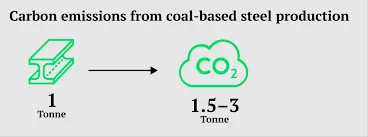Steel is one of the most resourceful material on earth that is mainly used by man in their day to day activities. it used by men in building we live in, the car we transport ourselves with and most of the infrastructures used by men. we use steel in eating food, for cooking utensils and in building of aircrafts. as much as we use it in our day to day activities, it is responsible for more than 7% of the world global green house gas emission. some year back, more than 43 countries devoted much time and resources in zero gas steel emission in the next 10 years ahead of us. But how can it be possible to produce more steel without emission?
Read More
Solar Panel Inverter – Inverters for sale
Universities Are Adopting The Policy Of Banning TikTok From Their Network Services
A new study on the Japanese industry has shown that if we want to obtain the aim of achieving zero steel emission, we must produce less steel. This method has help japan industries to reduce steel emission. Japan has set a target to reduce steel emission by 45% before 2023 and zero emission by 2050. the only way in achieving this aim is by developing the innovations in technology.
In the study published in Nature Sustainability, Dr. Takuma Watari, a researcher at the National Institute for Environmental Studies, Japan, currently working with the University of Cambridge, argues that there is no silver bullet. He says that current plans to cut carbon emission underestimate how difficult it will be to develop CCS and hydrogen technologies and deploy them widely.
The research indicates that with a carbon budget of zero emissions, the production of goods would be dramatically restricted compared to today, reaching about half the current levels at best. In this case, higher-quality production (e.g., sheet ) would be especially hard hit.
the indication is clear that it is not reliable on silver bullets materializing to transform of . we also need to reduce the rate at which is used and improving our material efficiency. we also need to manufacture high grade steel from scrap steel.
these will need teamwork from those who use it and those who produce it. the product could be design to be more efficient, lightweight and more durable. Once it products reach the end of their life, upcycling could be achieved through advanced sorting and shredding to remove impurities from scrap steel. As a society, Japan may also have to become less steel-dependent and shift to a model of “service use” rather than ownership of products. Unlike today, when it is abundant and cheap, a net-zero future will require us to use scarcer, more expensive steel resources with greater efficiency.
Placing material efficiency and upcycling at the heart of decarburization plans can reduce the over-reliance on innovative production technologies and prepare for the risk that these technologies may not scale up sufficiently in time.”




